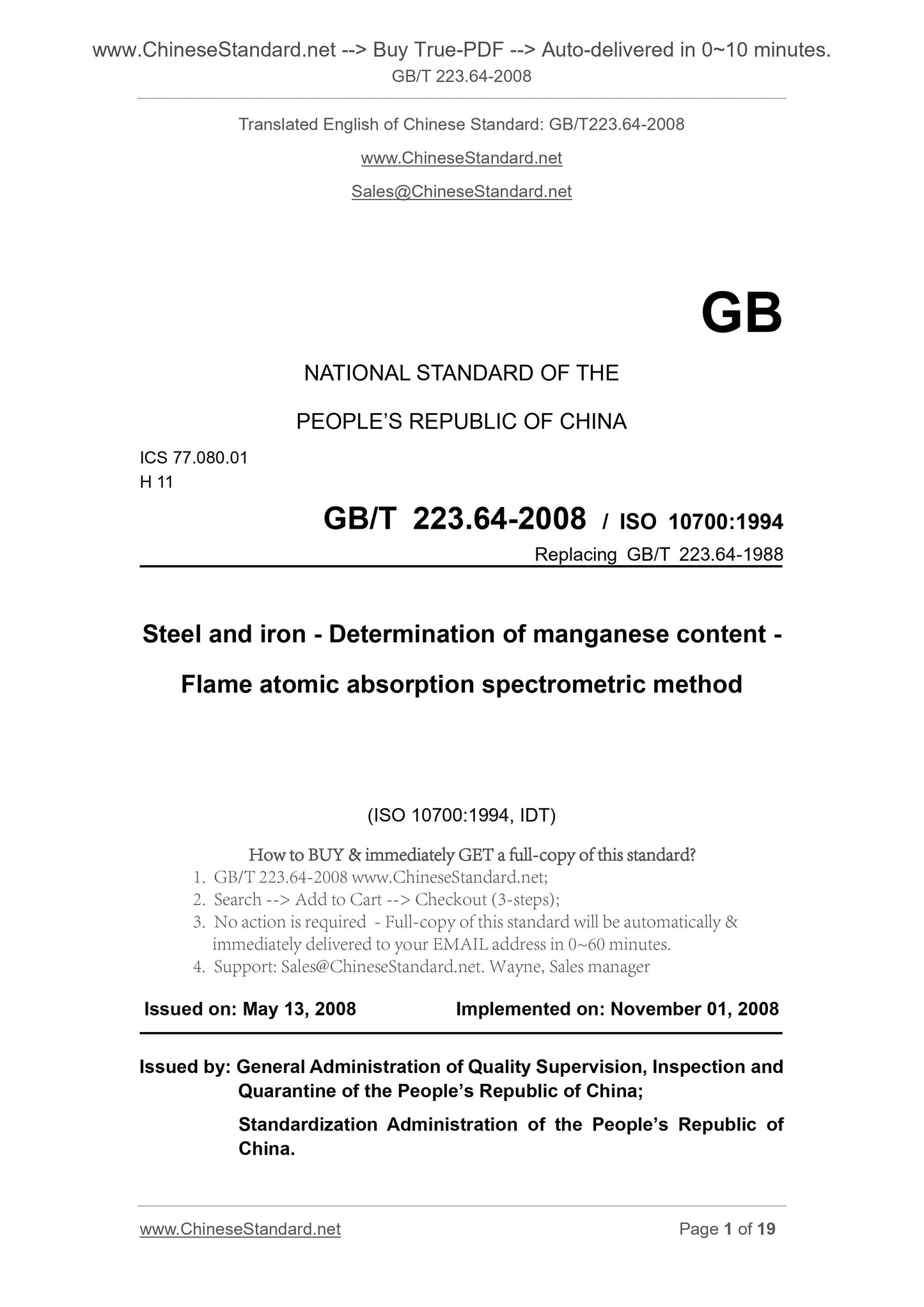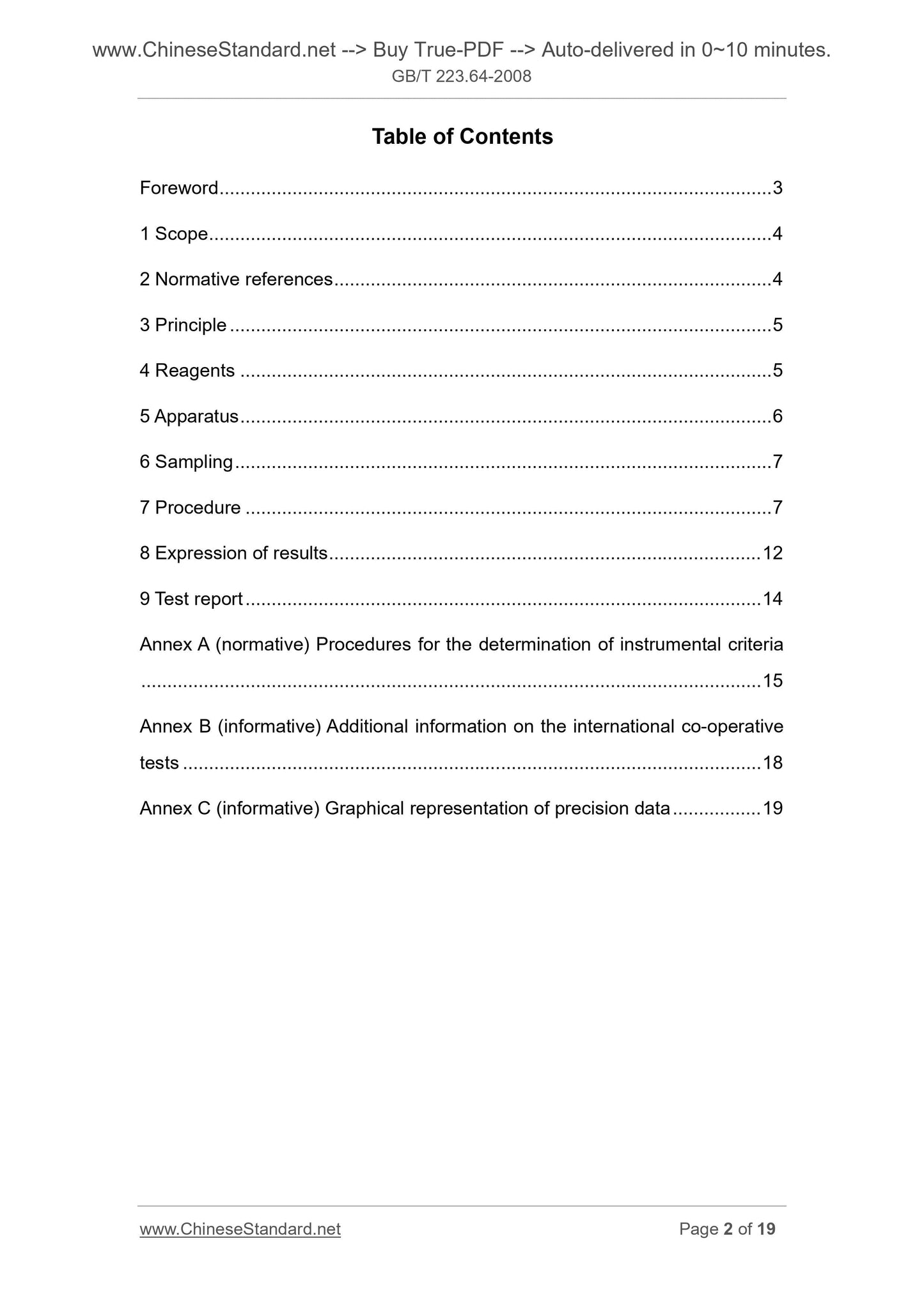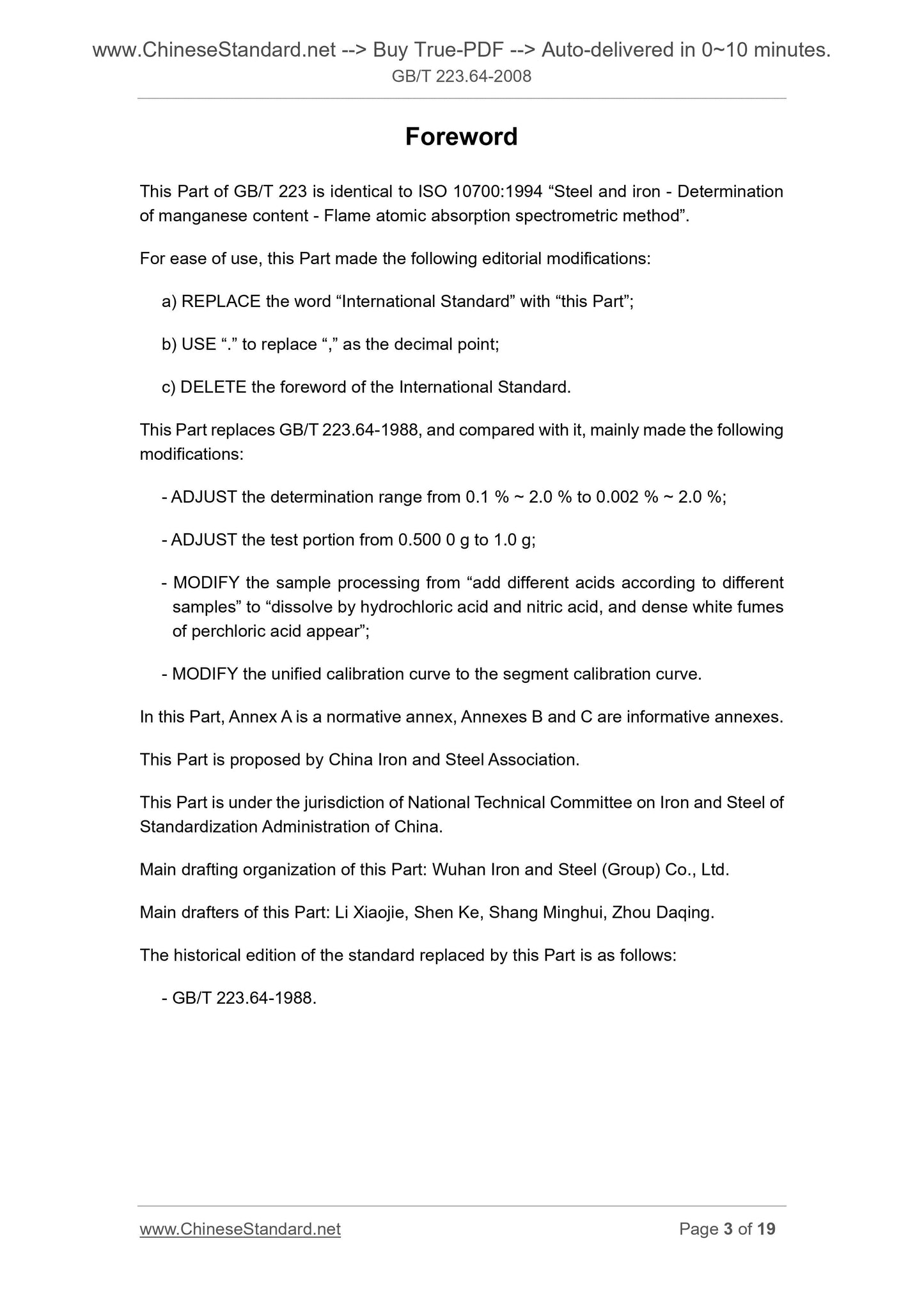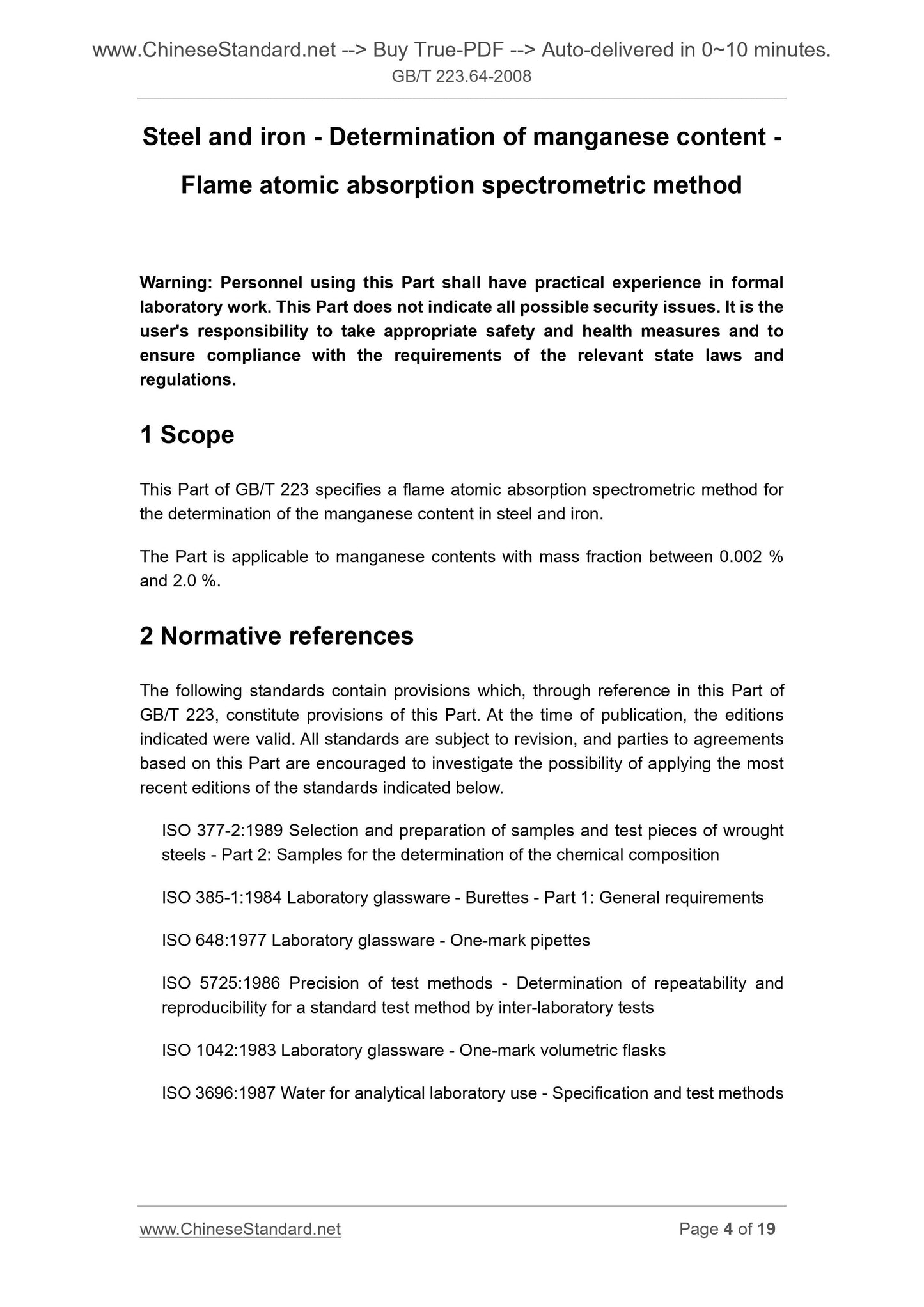1
/
of
4
www.ChineseStandard.us -- Field Test Asia Pte. Ltd.
GB/T 223.64-2008 English PDF (GB/T223.64-2008)
GB/T 223.64-2008 English PDF (GB/T223.64-2008)
Regular price
$75.00
Regular price
Sale price
$75.00
Unit price
/
per
Shipping calculated at checkout.
Couldn't load pickup availability
GB/T 223.64-2008: Iron, steel and alloy -- Determination of manganese content -- Flame atomic absorption spectrometric method
Delivery: 9 seconds. Download (and Email) true-PDF + Invoice.Get Quotation: Click GB/T 223.64-2008 (Self-service in 1-minute)
Newer / historical versions: GB/T 223.64-2008
Preview True-PDF
Scope
This section GB/T 223 specifies the determination of manganese content in steel by flame atomic absorption spectrometry.This section applies to the mass fraction of 0.002% ~ 2.0% determination of manganese content.
Basic Data
| Standard ID | GB/T 223.64-2008 (GB/T223.64-2008) |
| Description (Translated English) | Iron, steel and alloy -- Determination of manganese content -- Flame atomic absorption spectrometric method |
| Sector / Industry | National Standard (Recommended) |
| Classification of Chinese Standard | H11 |
| Classification of International Standard | 77.080.01 |
| Word Count Estimation | 13,17 |
| Date of Issue | 2008-05-13 |
| Date of Implementation | 2008-11-01 |
| Older Standard (superseded by this standard) | GB/T 223.64-1988 |
| Quoted Standard | ISO 377-2-1989; ISO 385-1-1984; ISO 648-1977; ISO 5725-1986; ISO 1042-1986; ISO 3696-1987 |
| Adopted Standard | ISO 10700-1994, IDT |
| Regulation (derived from) | National Standard Approval Announcement 2008 No.8 (Total No.121) |
| Issuing agency(ies) | General Administration of Quality Supervision, Inspection and Quarantine of the People's Republic of China, Standardization Administration of the People's Republic of China |
| Summary | This standard specifies the determination of manganese in steel by flame atomic absorption spectrometry. This section applies for the determination of the mass fraction of 0. 002% to 2. 0% manganese content. |
Share







